NISSAN - Le Vernède
Wonderful!
I first visited La Vernède in July 2006 when I heard there were Visigothic graves there, for I was researching the Visigoths at the time. (You can see details of my Visigothic writings on http://visigothscentre.blog4ever.com )
La Vernède is a wine château on the border of Aude and l'Hérault, near the village of Salles d'Aude, from which it is sign-posted. A friend had seen a sign-post saying "Site Visigothique" so I had to go and see it.
There were Visigothic graves and then various items in the small museum in the wine-tasting room, where are kept the barrels of wine, lodged between small walls which were originally those of a Roman villa.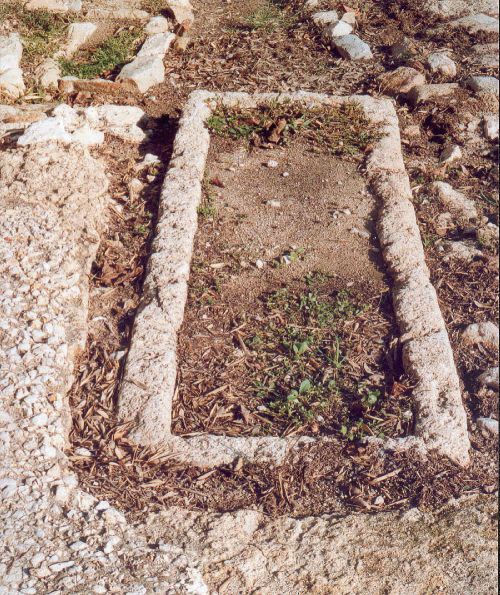
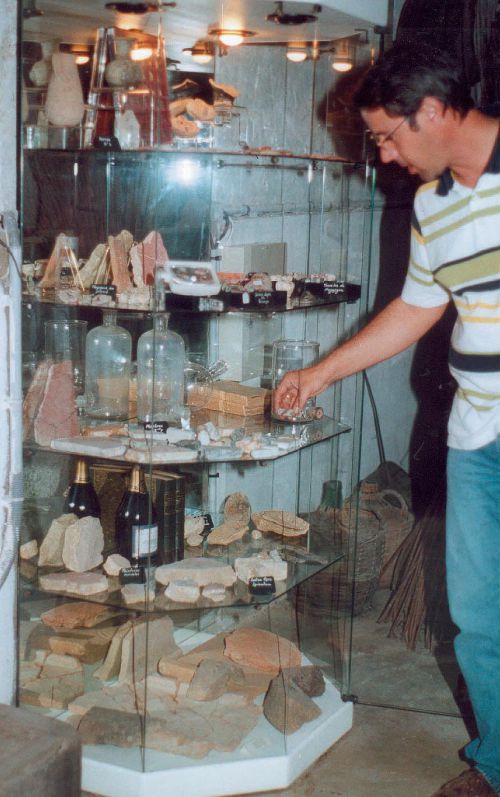
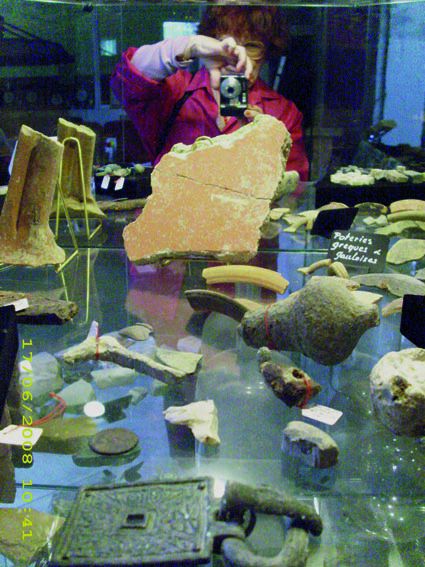
Above; a Visigothic grave; Jean-Marc Ribet; me reflected in the mirror, photographing the belt-buckle.
I was very impressed by the owner, Jean-Marc Ribet. He is a business man with many calls on his time, but he spent at nearly two hours talking to us because history is his passion. He had discovered that La Vernède was the site of a great Roman villa that was destroyed "in the barbarian invasions." As he had found Visigothic remains there, particularly a belt buckle, (he let me hold it for a while to tune in to the Visigoths) he thought the villa had been burned by the Visigoths. But no, I found out it had been destroyed by the Vandals, in the early 3rd century. They swept on their way afterwards and the villa fell into ruin. When the Visigoths came they lived there, and buried their dead in stone tombs (as above) not realising that they were digging through an ancient Roman mosaic floor.
However, on the site was discovered the remains of the Chapel of Ste. Cécilia; Roman or Visigothic, no one seems to know, so La Vernède must have been one of the earliest places to become Christian. Jean-Marc Ribet has since named his daughter Cécilia - plus his most elegant wine.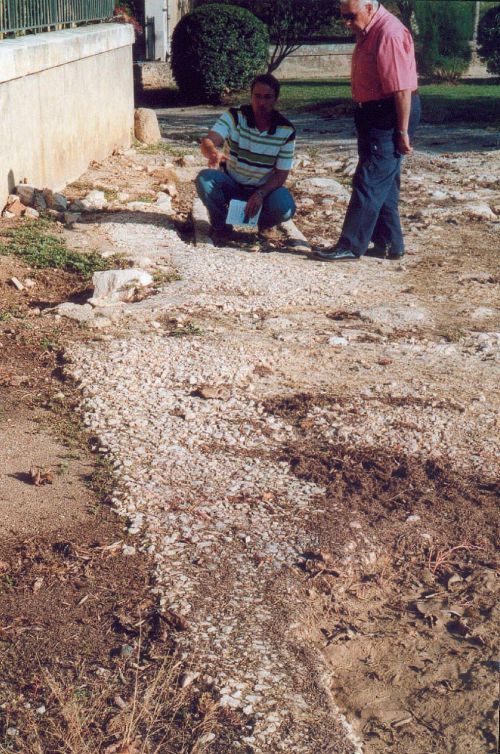
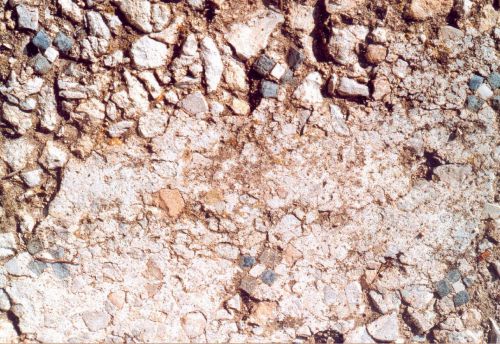
Meanwhile, the road running in front of the château was a tiny municipal road; it was decided the route should be changed, to run outside the château grounds, and when the gravel and tarmac was cleared away, remains of mosaics were found only 10cm below the surface! They were very worn, but you can perceive the pattern of tiny dark flowers with white centres on a neutral background.
Then, in the Spring of 2008, I received even more amazing news. The remains of the municipal road had been taken up and yet more mosaics were discovered.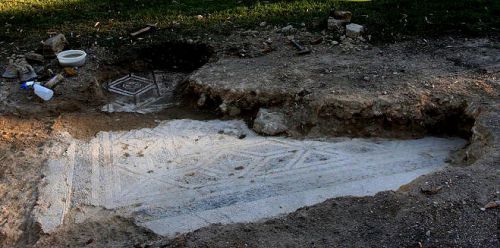
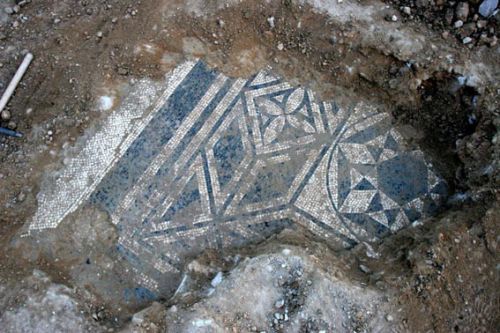
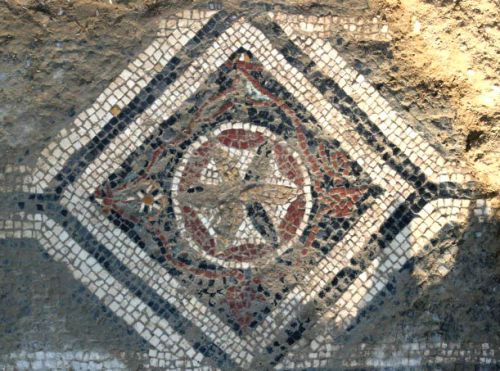
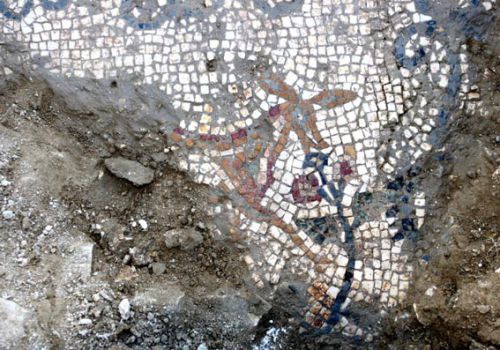
The "diamond" and the "mischievous deer eating a flower" were particularly charming. This find was exciting indeed. By this time I had joined the Via Aquitana Association, and so Nicole and I went to La Vernède for a reconnaisance.
Once again, Jean-Marc Ribet was the perfect host. It was a rainy day, but he cleared the rain off the mosaics so we could see them, and explained, while we looked at the little museum in the tasting room, of all the things he had discovered. These included much Roman glass and coins dating from 100BC to the early 8th century. Why had everybody left in such a hurry? It was probably because Charles Martel ravaged the region in 737, leaving Languedoc a wasteland.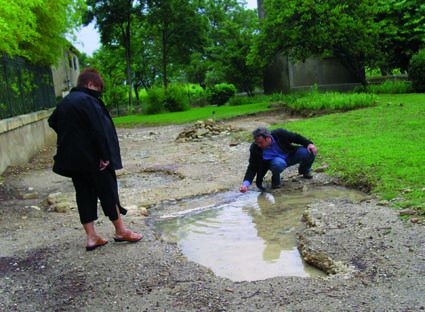
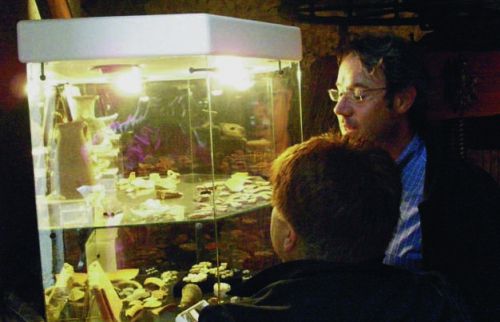
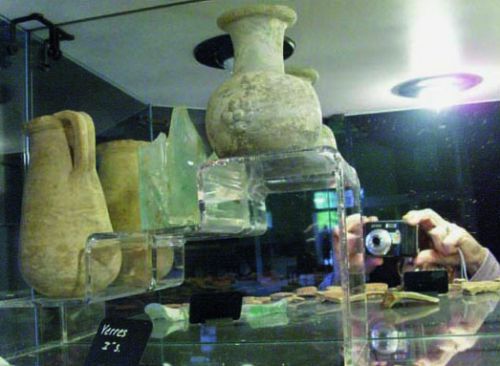
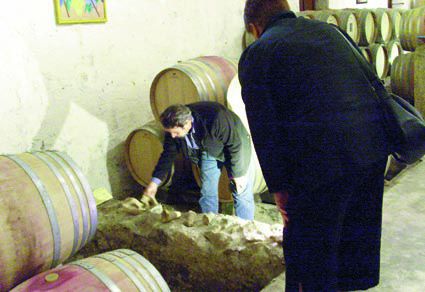 Barrels stored between the remains of Roman walls.
Barrels stored between the remains of Roman walls.
A formal excursion was arranged; La Vernède is near the route of the old Via Domitia. Everybody was impressed that we were among the first people to see these newly revealed mosaics. Jean-Marc explained further; In the grounds is a 30 metre Roman wall, beyond it is today's château and between the two is where the mosaics were discovered.
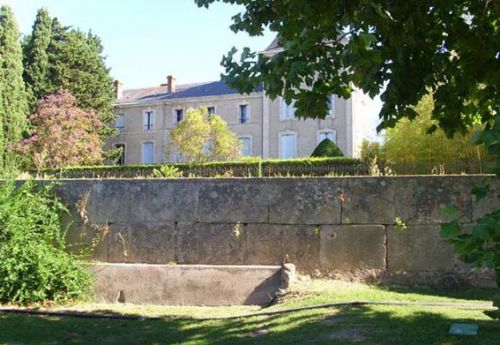
In the foreground; once a Roman lake; centre, the site of the villa; background, today's château
The first mosaic shown here, (above) with the tiny black flowers, was the floor of the entrance hall which led to a huge living and dining area, with the more ornate mosaics. There the Roman aristocracy would sit - eating oysters. Then they threw the oyster shells over the wall into the artificial lake filled with goldfish - this was Roman luxury indeed! We found many seafood shells; they don't decay and can be found wherever the Romans lived in Gaul.
The members of the Association, included myself, were delighted when permission was given to photograph the mosiacs.
Then we repaired to the tasting room to sample the wine and buy some. La Vernède wine is not sold in ordinary shops, but always through the château, including exports abroad.
Later . . .
I received a photo from La Vernède. The Visigothic grave that the Visigoths had dug, all unknowingly, through the mosaic floor of the villa, had been excavated and in the grave was a skeleton of a Visigoth.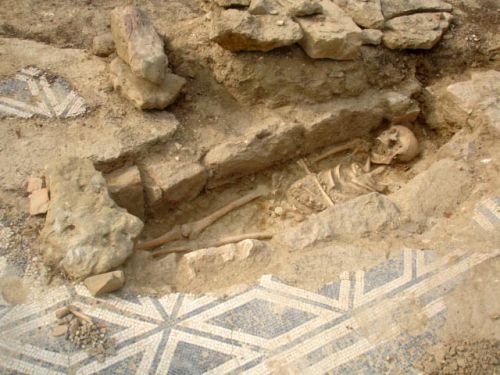
This was in late 2008, since then more excavations have been taking place. Do visit if you can and let me know your thoughts, either with an e-mail through "Contacter l'auteur" at the bottom of the page, or else by sending a commentary for all readers to read in the box below.
This beautiful wine-château is set in 150 hectares of gardens and vines. It is situated just to the south of Nissan in Hérault, not far from the village of Salles d'Aude near Coursan in Aude, from where it is sign-posted. Tel 04 67 37 00 30 or look at;
www.chateaulavernede.com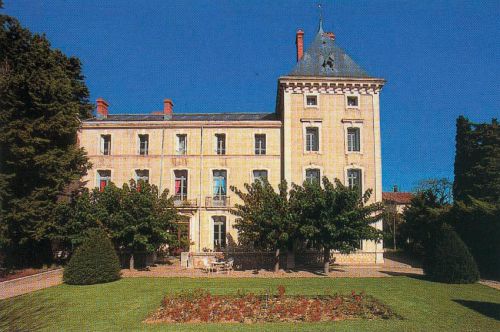
Inscrivez-vous au blog
Soyez prévenu par email des prochaines mises à jour
Rejoignez les 16 autres membres
